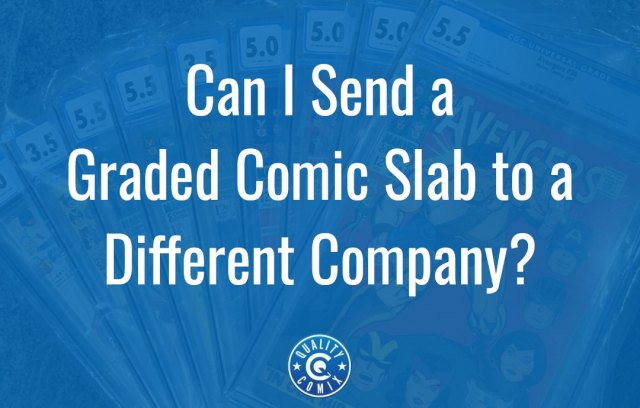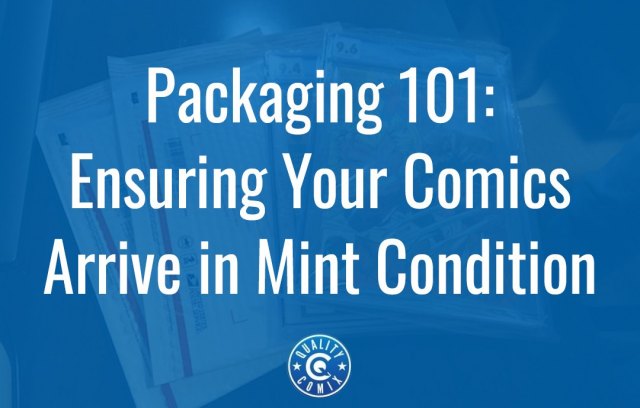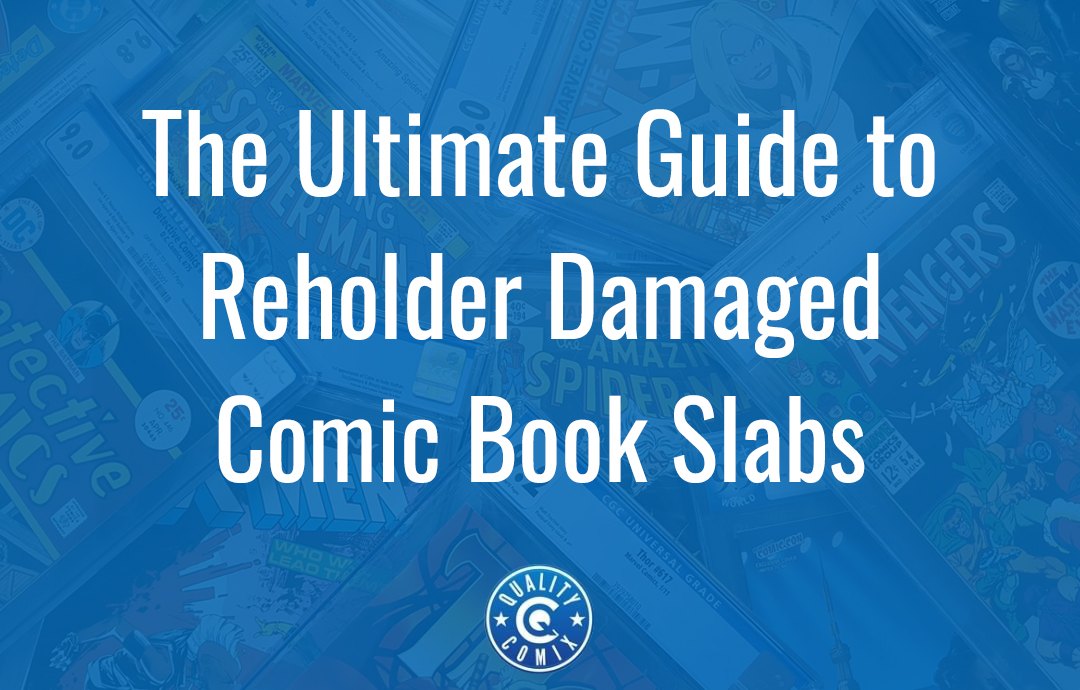
Condition is everything when you're deciding on the value of a key issue comic or other collectibles. The difference in price between the near-unattainable perfect 10 and the high-grade 9.9, or 9.8, can be a matter of tens or hundreds of thousands of dollars in some cases.
That's why part of the grading process for a collectible, like a comic book, trading card, or even video game, involves encapsulation, also known as slabbing. Encasing the collectible in a protective plastic shield to prevent damage from UV rays, impact, or other environmental destruction, is a key part of maintaining the value of the piece.
These slabs are just plastic, though, at the end of the day. They're made to be viewed through – after all, if the collectible was to be stored away from light, radiation, and other potential damage, you'd need a vacuum chamber hidden away in a lead vault, and then it's no longer really a valuable collectible, but a buried treasure. By the time you start constructing a maze-like tomb full of traps to protect your collectibles, you've gone beyond the scope of collecting.
The point is, plastic isn't impenetrable or inviolable. It's just plastic. It can get scratched, damaged, cracked, broken, or otherwise harmed by lack of care, accident, or even dispassionate destruction. There are any number of possible reasons why a slabbed comic might be damaged, so what can you do?
Luckily, there's a way to handle this problem, and that's a reholder. Reholdering a slabbed comic just means sending the damaged comic back to the grading company for re-encapsulation, but is there more to the process? Will it affect the grade of the comic? Is it even safe to do so? Let's dig in.
Table of Contents
What is Reholdering?
Put simply, reholdering is a service offered by the grading companies to replace the slab on a graded comic.
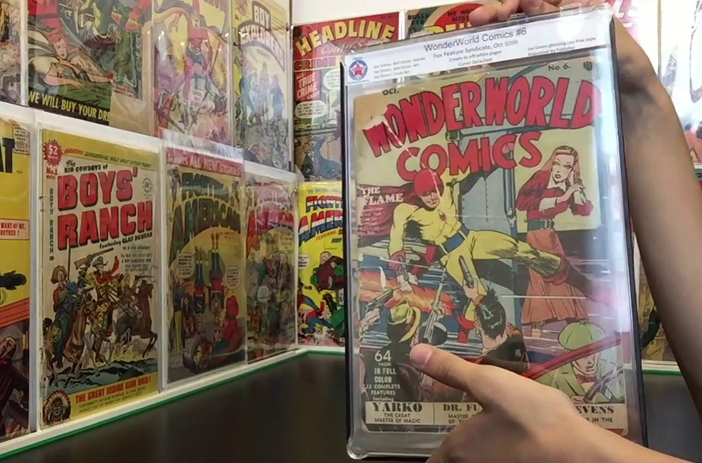
Image source: Google Images
A comic that isn't graded can't be reholdered, only graded and slabbed in the first place. Different grading companies have different specific processes for this.
Reasons to Reholder a Slabbed Comic
Reholdering a comic is generally done for a handful of reasons.
The first is that the slab is an older style, and you want to upgrade it to a newer style. As with any technology, slabs have been developed and improved over the years. A comic that was slabbed in 2005 might not be nearly as well protected as a comic that is slabbed now or within the last few years. Companies like CGC are constantly working to develop new slabbing technology that can protect a comic without hiding it away.
The second reason is damage. If your slab is cracked, broken, tampered with, clouded, scratched, or otherwise hurt by the environment, shipping, or handling, it can be reholdered to replace the slab and restore it to its former glory.
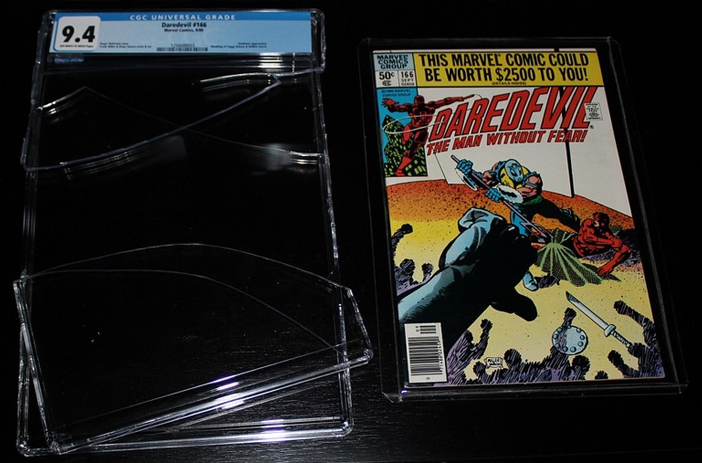
Image source: Google Images
Technically, of course, you can get a comic reholdered any time you like by paying for the service. There's not much reason to do so if the current slab is both the current style and not damaged, though.
A potential third reason is pressing and cleaning. If a comic was slabbed before pressing and cleaning became commonplace, and running it through the process could improve its grade, you could send it in for both services and hopefully get a better grade out the other side.
Is my CGC slab broken because the sides are open?
This is a common question you see all over the internet wherever slabbed comics are discussed. You buy a slabbed comic for hundreds or thousands of dollars, you get it in the mail, and you find something like the pictures in this thread; a plastic case you can easily pry open with your fingers that doesn't seem like it would even protect the comic inside.
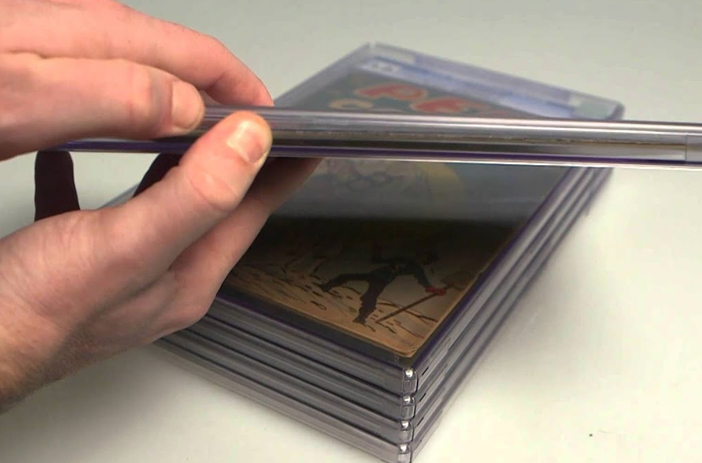
Image source: Google Images
Is this a broken slab?
The answer is no. It's actually a common misconception that slabs are hermetically sealed or otherwise completely protected from the elements. In fact,
- Slabs are not UV-protective, so sun exposure can still damage a comic over time.
- Slabs are not sealed from the environment, so water can still penetrate them if they're dropped in a puddle or something.
- Slabs are not airtight, so over time, oxygen and other environmental air contaminants can work their way into the slab.
Modern slabs are better sealed than old slabs, but they still aren't completely air and water-tight. They can protect against a stray spill, but a true disaster is still going to ruin them, as you can see in this thread.
Why aren't slabs completely sealed? Comics are not inert, as much as we might think they are. Everything in our universe decays over time – it's one of the fundamental truths of the universe, that entropy exists. Comics are no exception. From spontaneous destruction of atoms to off-gassing from the paper and ink to slow rusting of the staples, comics are subject to damage no matter how they're stored.
Part of the problem is that paper is organic. The chemicals used to make the paper can degrade, the paper itself can grow brittle with age, and acids released from the degradation can further damage the comic. You can also have microorganisms, like bacteria or fungi, grow and feed on the paper.
Encapsulation is designed to protect the comic from incidental environmental damage. However, trapping all of the air and contaminants inside a slab could accelerate its own internal damage. It's a lot like how a ripe banana gives off ethene gas that causes other nearby fruit to accelerate their ripening. The more acid and other off-gassing trapped in with the comic, the faster it will degrade.
CGC comics includes an acid-absorbing sheet with comics that are graded, which can help halt this process, but it's only good for around seven years. Technically, that paper and the slab should be replaced every seven or so years, but this rarely actually happens.
So, there's another reason to reholder a slabbed comic: to replace the acid-absorbing sheet when it wears out.
What's the Point of Slabbing if it's Not Protective?
As an aside, you might be wondering: if a slab isn't airtight, isn't water-tight, and isn't UV-protective, then what's the point? Wouldn't bagged-and-boarded comics carefully stored in a long box be just as protected?
This is actually a huge ongoing debate in the comics community. Companies like CGC always recommend slabbing valuable comics, but of course they're invested in the process because they make money doing it.
Comic investors also promote slabbing comics because slabbing comics (almost always) increases their value. If you can pay $50 to get a $500 comic to be worth $900 instead, that's a good deal, right?
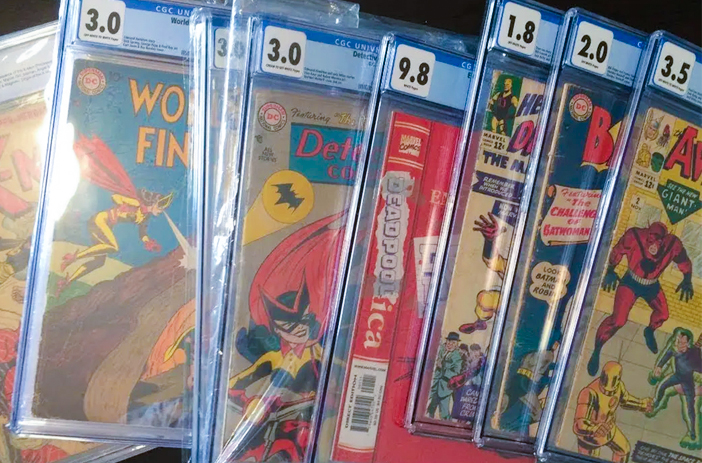
Image source: Google Images
Other people argue against slabbing comics for a variety of reasons. The lack of true protection is one, but there's also the argument that a slabbed comic can't be used for the intended purpose of reading it. Not that collectors often read their physical comics anyway – that's what digital copies are for.
Truthfully, slabbing a comic does help protect it somewhat more than a standard bag-and-board. The inclusion of an acid-absorbing sheet helps minimize the effects of off-gassing, and the slab is more resistant to dings and impacts than a simply mylar or plastic bag. Careful storage puts these on equal footing, but catastrophe can always happen.
If all you want is protection and you don't care about resale value, you can also buy blank slabs and encapsulate your comics yourself. These don't have a grade attached, but they get the protection out of it.
Is Reholdering a Comic Risky?
Yes and no.
Reholdering is a careful process wherein trained technicians carefully crack open a slab and remove the comic, replace the acid-absorbing sheet, the inner bag, and the outer slab, then re-seal it according to modern encapsulation practices.
In the standard slabbing environment, there should be very little risk of damage occurring. Now, a truly brittle comic could chip during handling, which is nearly impossible to avoid, and there's always the risk of some catastrophic issue (an earthquake at the grading facility, the technician experiencing a health emergency and damaging the comic in their spasms, etc.), but the chances of this happening are very close to zero.
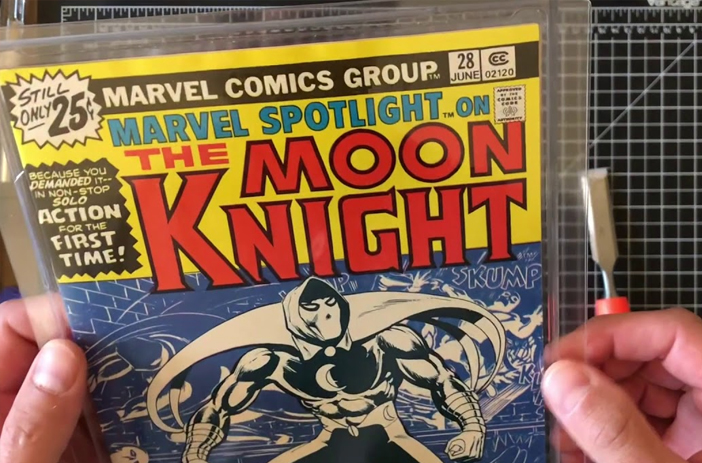
Image source: Google Images
The biggest risk of reholdering a comic is actually the shipping to and from the grading facility. We all know that the postal service and the various shipping companies are pretty bad about carefully handling their parcels, no matter how clearly labeled they are, and there's the whole additional layer of customs for international shipping.
Ideally, proper packaging will keep comics protected from mishandling in shipping. But, there are any number of problems that can crop up during shipping, up to and including a total loss. Unfortunately, short of bringing the comics in yourself and keeping them carefully secured every step of the way, there's no way to guarantee safe transit.
Always get proper insurance for any package you ship, so if the worst happens and your comics are lost or destroyed in transit, you can at least be reimbursed.
Will Reholdering Change the Grade of a Comic?
Maybe.
The process of reholdering isn't simply a matter of copying the grading information from the old label to a new label, moving the comic to a new slab, and calling it good.
If it were, you'd run into fraud. Someone could buy a high-grade comic, crack open the slab, slip in a worse condition comic, and send it in for reholdering to be graded at a higher grade; they could then sell the high-grade fraud and re-grade the actual high-grade comic to eventually repeat the process.
Grading companies will inspect a comic when it is sent in for reholdering, and if the condition is significantly different from what the label says it should be, they'll re-grade it.
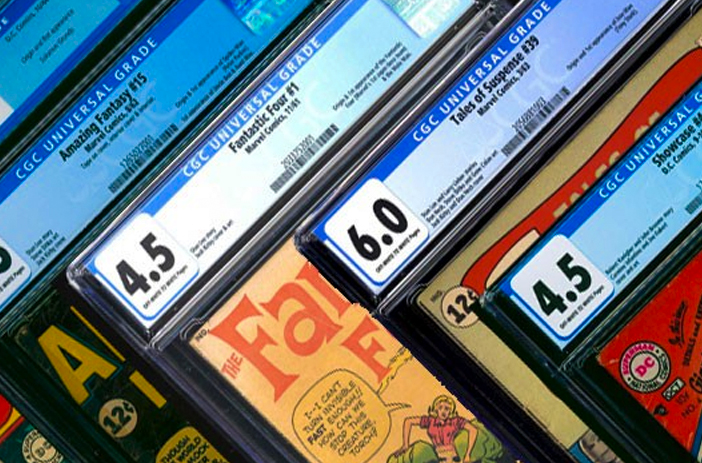
Image source: Google Images
CGC says this on their reholdering page:
"The grade assigned to the book should not change unless any damage occurred post-encapsulation, in which case the grade will be adjusted accordingly."
So, assuming the condition of the comic doesn't change, the grade won't change either. Unfortunately, if something catastrophic happens and the slab is damaged, it could damage the comic inside as well, and that will change the grade of the comic.
How Much Does Reholdering Cost?
Pricing varies depending on the grading agency.
The majority of the time, people use CGC as the go-to most authoritative, reliable, and trustworthy grading company. CGC only reholders comics graded in CGC slabs, so if you're looking to reholder comics, you need to send them to the agency that graded them in the first place. For a rundown of other grading companies, check our guide here.
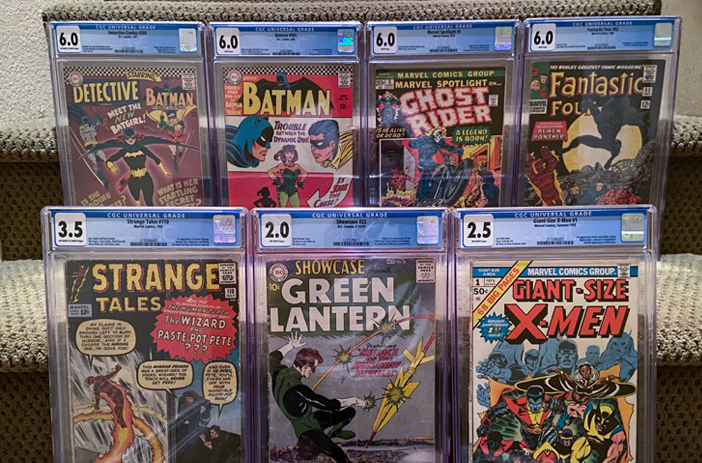
Image source: Google Images
CGC has two tiers of pricing.
- For comics with a declared value of up to $1,000, it costs $20 to reholder the comic.
- For comics with a declared value above $1,000, it costs $50 to reholder the comic.
CBCS will reholder any comic they've slabbed for a $12 fee, with no value limitations.
PGX is a bit unclear, but their submission form indicates a similar $12 fee for reholdering.
EGS doesn't currently seem to offer reholdering services at all.
So, CGC is the most expensive, but that's because their grading comes with more reputation and prestige than other grading companies.
Interested in Buying or Selling?
If you want to buy or sell slabbed comics, whether or not they've been reholdered, you've come to the right place. If you want to buy, feel free to browse our inventory.

If you're interested in selling, you can reach out and drop us a line, either directly or through our submission form. Heck, if you have a collection and you're not sure what's in it or if it's worth anything, you can reach out and describe it, and we'll help you figure out the best avenue to proceed. There's no pressure! We just love talking about comics and exploring collections, and we do our best to offer unbiased suggestions. We'd love to hear from you, so drop us a line today!

